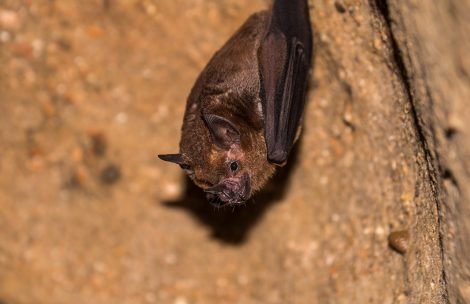How to avoid the risk of rabies from bats
Rabies is preventable if medical care is received quickly
PRESS RELEASE
August 1, 2024
Occasionally, a solitary bat will fly into a home, garage, or other building through an open door or window. Not all bats carry rabies, but it is best to use caution anytime you are around bats.
Rabies is a deadly virus that spreads to people from the saliva of infected animals. It is nearly 100 percent preventable if medical care is received quickly. Untreated rabies infects the brain and results in death. Bats and skunks are the main sources of rabies in Colorado, however domestic animals, such as dogs, cats, cattle, and horses, can also become infected. Unvaccinated dogs are the main cause of death from rabies worldwide, so exercise caution in countries where these animals are not vaccinated.
You can get rabies if you come into contact with saliva from an infected bat. Contact includes bites, scratches, encountering saliva or waking up to find a bat in your sleeping area.
Bat bites can be very small and may be too small to see or feel. Always use caution with any bat that is active during the day or found in your home.
If you find a bat inside your home and contact has occurred or you are unsure
• Do not release the bat into the wild. The bat may need to be tested for rabies.
• Never handle a bat with your bare hands.
• If you have been bitten, wash the wound with soap and water for at least 15 minutes and seek medical attention.
• Keep the bat away from other people and pets while you contact an expert OR try to contain it.
• Without harming the bat, confine it in a container, such as a small box. Slide cardboard under the container and tape it closed.
• Wear heavy gloves or use tongs or a shovel if you need to pick up the bat.
• Call Garfield County Public Health at 970-945-6614, extension 8135, to report the incident. They will decide if the bat can be released or should be tested.
If you find a bat inside your home but no contact has occurred
• You can release the bat into the wild but take precautions so that you are not bitten or scratched and avoid damaging the bat.
• Open doors or windows to help the bat fly out on their own.
• Confine the bat in a container, such as a small box. Slide cardboard under the container and tape it closed.
• Never handle a bat with your bare hands. Wear heavy gloves or use tongs or a shovel if you need to pick up the bat.
Pets and bats
• Contact your veterinarian if your pet was bitten by a bat, had a bat in its mouth, or was near a grounded bat.
• Dogs and cats 4 months or older are required to be up to date on their rabies vaccinations.
If bats move in
Sometimes bats seek shelter in buildings and homes. While bats are highly beneficial animals, they sometimes cause problems or are considered a pest. Keep bats from moving into spaces where people live. Permanently and humanely removing bats from coming back into buildings requires patience and attention to detail. You can do it yourself following guidelines from Bat Conservation International or hire a professional.
More information
Colorado Parks and Wildlife – Living with wildlife, bats, rabies
Centers for Disease Control and Prevention – Preventing rabies from bats


